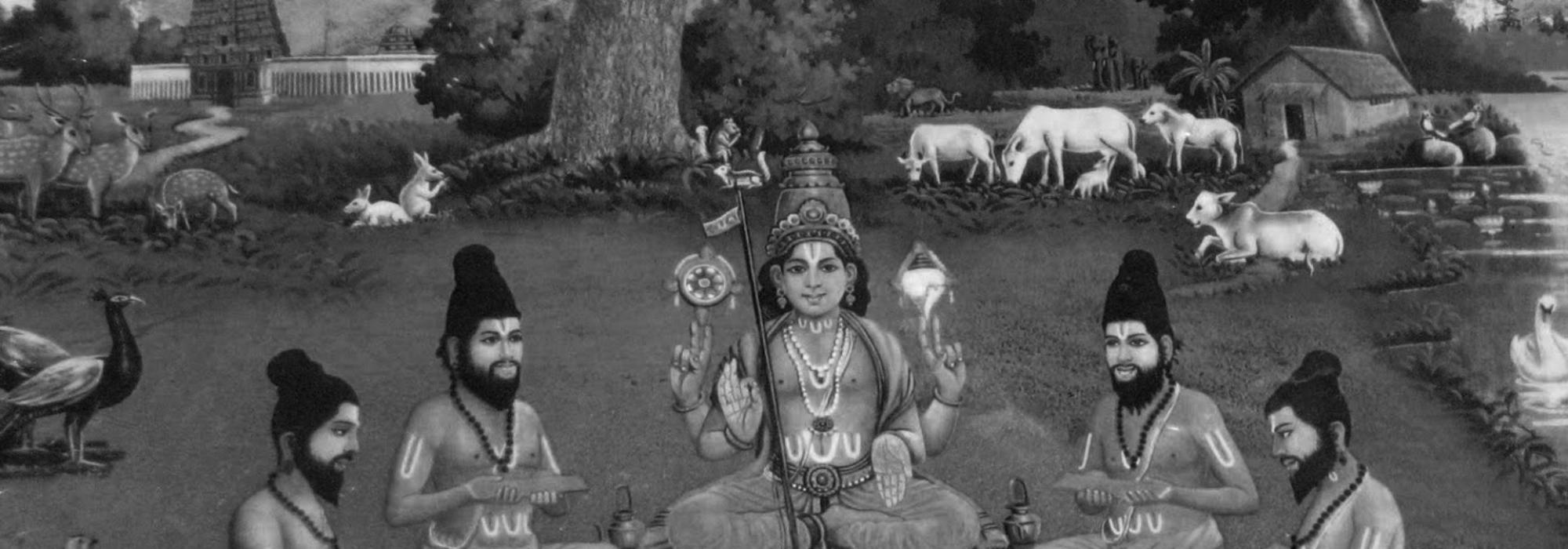In our tradition, of the lineage of seers, the family that stands out is the Bhrguvamsha (or the Bhargavavamsha). Bhargava was one of the leaders of our country’s rise in material prosperity; he even tried to reach out to other-worldly wealth. Chyavana, one of the founders of Ayurveda; the seer-poet-artiste Shukracharya, who was a master of the Arthashastra and skilled in martial science; the seer Dadhichi who sacrificed his own body for the sake of universal welfare; and other greats were all descendants of the Bhrguvamsha. Among the early luminaries of brahmavidya was Dadhichi’s son Pippalada.
As for seer Bhrgu, he had such a high standing and stature that he could make the gods shiver. The seer Akshapada bears testimony to the fact that they had a sharp intellect and great logical prowess. The descendants of the Bhrguvamsha were great seers who toiled for universal welfare by undertaking several activities including farming, tending to and protecting cattle, trade, sea voyages, and arts. Vishnu is said to be lying on the ocean that belongs to the descendants of the Bhrguvamsha; he lives in his wife’s house as a house-husband, and to that end Lakshmi (Bhargavi) stands firm there. The descendants of Bhrguvamsha were constantly at war with the Haihaya clans, who were adharmis.
Another line of seers who were as brilliant as the Bhargavas were the Angirasas. The greatest of the Angirasas was the seer Bharadvaja. He was a master of many worldly and other-worldly arts. The seer Dirghatamas who was highly knowledgeable in philosophy and spirituality was also one of the Angirasas. One of the luminaries of the Angirasavamsha was the seer Brhaspati, who was the son of the seer Angirasa and was the spiritual adviser of the devas. He was the braahma behind the kshaatra of the devas. Shukracharya of the Bhargavas was the braahma behind the kshaatra of the asuras.
Among these, one who stands matchless, peerless is Parashurama, a descendant of the Bhargavas. He was a symbol of the great harmony between braahma and kshaatra. The famed story in the Puranas speaks of Parashurama’s methodical destruction of evil kshatriyas. The shastras tell us that as a part of आपद्धर्म (rules that apply only in emergencies) each and every one of us can take up क्षात्र धर्म.
The great scholar-saint Vidyaranya says in his commentary on the Parasharasmrti, the Parasharamadhaviyam, that there is a chance that each person might have a feeling of kshaatra at some point of time. Parashurama roamed the earth twenty-one times and decimated all the evil kshatriyas, finally giving away everything to Kashyapa, who in turn gifted it away to worthy kshatriyas. Some people feel that he was anti-kshatriya but that is not true. He fought tooth and nail against the evil kshatriyas, not those who adhered to dharma. If not, why would he have taught a kshatriya like Bhishma? Some Puranas even narrate the story of Krishna receiving his सुदर्शन चक्र and other weapons from Parashurama.
Two great seers who came before Parashurama were Chyavana and Aurva. Chyavana was such a powerful personality that he questioned Indra himself; he was also the one who gave the Ashvins (the divine twins who are the physicians of the deities) a share in the सोम यज्ञ. When the Bhargavas living in Bhrgukaccha (modern-day Baruch) fell out of favor with kshatriya kings from the haihaya kula (rulers of the Narmada province in Western India), they were chased down, persecuted, and killed. Among the Bhargavas being chased, there was a pregnant woman who concealed the baby in her thigh to save his life. The son born to her was Aurva (named so because he was born from the ऊरू, ‘thigh’). Aurva also earned a name defeating evil kshatriyas. Finally when the deities and the ancestors pleaded with him, Aurva threw away his anger into the ocean. This resulted in the submarine volcanoes, which is also known as और्वाग्नि (fire of Aurva). From this we can see the extent of the anger and energy which the descendants of the Bhrguvamsha had. All these people were experts in the Atharva Veda. They had made Agni as their family deity (or deity of their clan).
In his Mahabhashya, the great seer Patanjali tells us that there were nine shakhas (branches) of the Atharva Veda. Several of those have been lost. Today, we have only two shakhas. Of those only one is extant in the oral tradition, the शौनकीय शाखा. The other, पैप्पलाद शाखा, is not alive in the oral tradition but the text is available. The rest of the shakhas were alive in the regions what today have become Pakistan and Afghanistan. That region was the home of the Atharva Veda. The Bhrguvamsha ruled over this strategic location and protected India. With the onslaught of Islamic invaders, several of the Atharva Veda shakhas disappeared.
Translated from Kannada by Hari Ravikumar

















































